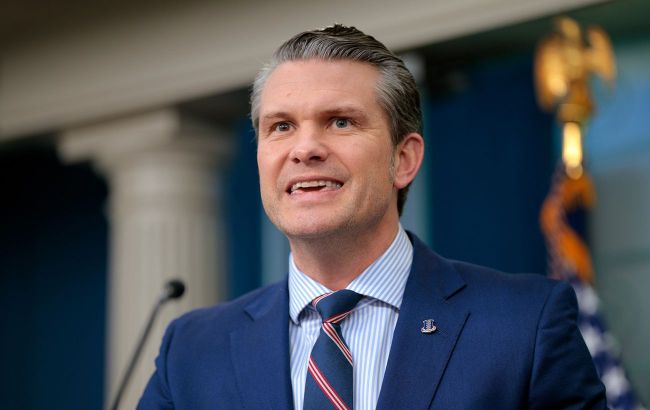Hegseth cuts US Army command: 'Purges' in Pentagon
 US Secretary of Defense Pete Hegseth (Photo: Getty Images)
US Secretary of Defense Pete Hegseth (Photo: Getty Images)
The Pentagon is reducing the number of generals and preparing to merge combat commands amid reforms by US President Donald Trump, reports Reuters.
US Secretary of Defense Pete Hegseth has ordered a 20% reduction in the number of four-star officers, continuing the process of optimizing the leadership structure at the Pentagon. This move marks another phase of reforms initiated at the beginning of Donald Trump's second presidential term.
Hegseth, who had previously publicly criticized the excessive number of senior command officers, is actively implementing initiatives to revise the Ministry of Defense's personnel policy. Since his appointment, he has initiated the dismissal of several high-ranking officials, including the Chairman of the Joint Chiefs of Staff, the Commander of the Navy, and the Director of the National Security Agency.
In a new memorandum, the Pentagon chief announced that the number of general officers in the National Guard will be reduced by at least 20%, while the number of general and flag officer positions in the US Armed Forces will be further decreased by 10%.
"More generals and admirals does not lead to more success. This is not a slash and burn exercise meant to punish high-ranking officers, nothing could be further from the truth," emphasized Hegseth in a video address released on May 5. According to him, the goal of the reform is to maximize the strategic readiness of the Armed Forces, and the process is being carried out in collaboration with the Joint Chiefs of Staff.
During Senate hearings on his confirmation, Hegseth noted that there is a feedback loop between the size of the staff and battlefield victory, pointing to the current 44 four-star positions in military command.
Merger of commands
According to the Pentagon, the decision to reduce the number of officers will be implemented gradually and carefully. Specifically, there is consideration of merging certain combat commands operating in different regions of the world. Among the likely options is the merger of US Africa Command with US European Command, as well as the potential fusion of US Southern Command, which is responsible for Latin America, with US Northern Command.
Additionally, a review of the necessity for several other four-star positions is under consideration, including the Commander of US Army Forces in the Pacific and the Commander of US Forces in the Republic of Korea.
The proposed changes have already drawn criticism in Congress. Senator Jack Reed, the senior Democrat on the Senate Armed Services Committee, questioned the rationale behind the cuts.
"I have always advocated for efficiency at the Department of Defense, but tough personnel decisions should be based on facts and analysis, not arbitrary percentages," he said, adding that removing experienced military leaders from their positions could harm the army instead of increasing its effectiveness.
Cuts in the Pentagon
The agency notes that the recent disruptions within the US Department of Defense have not been limited to officers in uniform. It was highlighted that, in recent weeks, three high-ranking officials were dismissed following an investigation into information leaks, as ordered by Chief of Staff Hegset on March 21.
Among those dismissed were Dan Caldwell, a long-time colleague of Hegseth, who had become one of his most trusted advisors. Last week, he was removed from the Pentagon due to an information leak, for which he denies responsibility. Also dismissed was Deputy Chief of Staff Darin Selnick.
The Pentagon will soon lay off 76,000 civilian employees out of the 950,000 personnel within the department.
Immediately after taking office, President Trump ordered the preparation of a plan to reduce the defense budget over five years.
One component of the plan involves reducing the US military presence in Europe.

